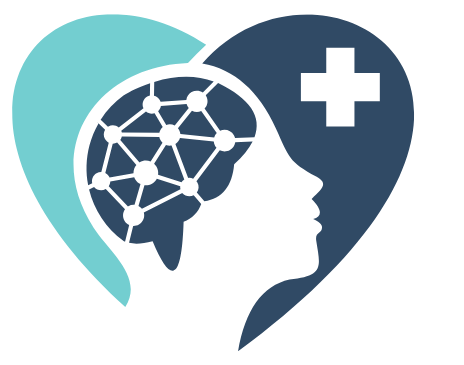Anxiety is an exaggerated response of our nervous system, where we often feel on-edge, fearful, and have difficulty relaxing. Anxiety can cause us to worry a lot, and struggle with racing thoughts. These responses arise from biological systems that help us respond to stress and threatening experiences in life. In fact, one of these systems is an area of the brain called the fear center, which mainly includes the brainstem. The brainstem developed early on in our evolution, and it operates automatically without conscious intent to help us survive. When the brainstem receives stimulus that it associates with danger, this triggers the amygdala, which sends out alarm signals to the hypothalamus.
The hypothalamus then triggers the sympathetic nervous system, including autonomic nerves which stimulate the adrenal glands. This process also happens unconsciously and instantaneously, without any intent on our part. The adrenal glands then produce stress hormones, including cortisol, adrenaline, and testosterone, which increase our heart rate, breathing rate, and elevate our blood pressure. Other reactions can include sweating, tense muscles, as well as psychological responses including hypervigilance and scanning for danger.
When people suffer from anxiety, these autonomic biological responses are getting triggered all of the time by non-threatening events. Over time, the brain begins associating irrelevant stimuli with fear, such as leaving the house, speaking in front of class, or driving. In effort to relieve oneself of these distressing symptoms, a person can start avoiding these triggering situations, leading to isolation, failure in activities, and unhealthy forms of coping.
This anxiety cycle can be broken with cognitive and behavioral strategies to help you regain control of your thoughts and responses again. In addition to cognitive-behavioral therapy, exposure and response treatments can also help you overcome phobias and crippling fears. In this post, I will describe basic coping skills from both of these treatment approaches that can help you recovery from anxiety.
(1) Help the Body Learn to Relax Again
As a consequence to chronic stress and over-stimulation of the sympathetic system, the body forgets how to initiate its natural relaxation response, which is controlled by the parasympathetic nervous system (PNS). The PNS slows down our breathing and heart rate when we are relaxed, and it facilitates digestion and the storage of energy for later use when we are at rest. Research has found that humans can trigger the PNS through controlled breathing exercises.
In fact, the military developed a controlled breathing exercise to help soldiers respond to stress in combat. To practice this skill, inhale slowly through your nose and count for 4 seconds (one-one-thousand, two-one-thousand, three-one-thousand, four-one-thousand). Make sure you inhale deeply so that your diaphragm extends. Hold your breath for another 4 seconds. Then exhale slowly for 4 seconds through your mouth. Finally, rest for 4 seconds to complete one complete round of controlled breathing, and then repeat this cycle 10 times. Interestingly, this powerful controlled breathing method has been practiced for thousands of years by cultures from India who developed yoga and “pranayama,” the practice of controlling the breath to induce deep states of meditation.
You can pair this deep breathing exercise with progressed muscle relaxation as well to stimulate the PNS. As you inhale, contract the muscles in your legs for four seconds, and as you exhale, relax your muscles. Every time you inhale during controlled breathing, contract another muscle group (feet, thighs, stomach, hands, arms, face, etc), and as you exhale, release the tension in your muscles. Continue pairing your breath with your muscle contractions until you tense and release as many muscle groups in your body as you can. Once you reach your facial muscles, you can work down the body again. This is especially helpful to practice lying down before you fall asleep.
(2) Help Your Mind Regain Rational Thinking
In response to chronic stress and constant vigilance, our mind begins reinforcing patterns of worry, scanning for danger, and perceiving irrational fears. One of the most common anxious thought patterns begins, what if… and then proceeds with frightening scenarios that are unlikely to happen to us. What if… I make a fool of myself at school/work and everyone rejects me/I get fired. What if…. I leave the house and have a panic attack when no one will be there to comfort or rescue me. What if….I get stuck in the rain while driving and hydroplane off the road.
Our mind is infinitely creative in this harmful way. These what if thoughts can cycle quickly through our mind and feel difficult to control, and make us feel crazy. Researchers have found dozens of similar irrational thought patterns that increase anxiety, which are called cognitive distortions. To learn about others, please view my article Distorted Thoughts that Contribute to Depression and Anxiety.
The best way to end this cycle is to practice mindfulness of your thoughts. Mindfulness refers to a practice of conscious awareness where we mentally distance ourselves from our thoughts. When we practice mindfulness, we watch our minds non-judgmentally to practice labeling cognitive distortions. This happens in the same way we practice watching clouds floating by in the sky, that cloud looks like a bear…. that cloud looks like a car. It can help to think of the calm state of the mind like the clear blue sky, and our thoughts are the clouds drifting through it.
You can practice mindfulness while meditating by setting a timer for 5-10 minutes and sitting on a chair or cushion while you focus your attention on your mind. You can also practice mindfulness while journaling your thoughts in a similar way, by setting a timer for 5-10 minutes and allowing yourself to write whatever comes to mind, without judgment or filtering. Both of these processes can be very revealing. Sometimes there are fears and anxious worries floating through our minds that surprise us.
Whichever mindfulness practice you choose, it helps to stay consistent. Consistent meditating or journaling will help you identify the types of distorted thoughts that most commonly arise in your mind. Then, you can practice challenging them by evaluating evidence for or against the thought.
(3) Overcome Fear by Stepping Outside Your Comfort Zone
We can break the cycle of anxiety by challenging ourselves to face our fears and step outside our comfort zones. This strategy is very important, because the more we avoid uncomfortable situations, the more our mind reinforces the fear. Our brains are like little computers that get better at the functions they perform often. This is why we can feel stuck in self-defeating patterns. The good news is that we can change our brain’s programming and strengthen neuro-networks that will make positive, rational thoughts more automatic, and that will re-associate previously feared stimuli with calm.
The best way to overcome avoidance is to create a fear ladder. A fear ladder is a list of small steps you can take to eventually overcome your fear. If your fear is going to the mall, you can start by looking at pictures of the mall or watching videos of people at the mall. Then you can practice driving past the mall in your town. A third step could be practicing parking in the mall parking lot and sitting in your car for several minutes before heading home. To help your body cope with anxious discomfort during one of these steps, you can practice controlled breathing with muscle relaxation until your anxiety level reduces. You should practice each step until your anxiety level reduces to a 4 or lower on a 10 scale, and then repeat the challenge 3 times before moving onto the next. Keep in mind that if you challenge yourself when your anxiety level is 5 or higher, you risk triggering your fight-flight-freeze response. Your final challenge could include walking up to the mall entrance, or even walking inside the entrance and returning to your car.
Of course, it’s best to develop a fear ladder with the help of a trained therapist or mental health professional, so that you can learn other anxiety coping skills and better manage difficulties as they arise. However, the old principle remains true that to overcome your fear, you have to face your fear (assuming there are no real dangers involved!). To connect with a therapist near you who can help you overcome anxious avoidance or phobias, you can visit PsychologyToday.com or BetterHelp.com.

